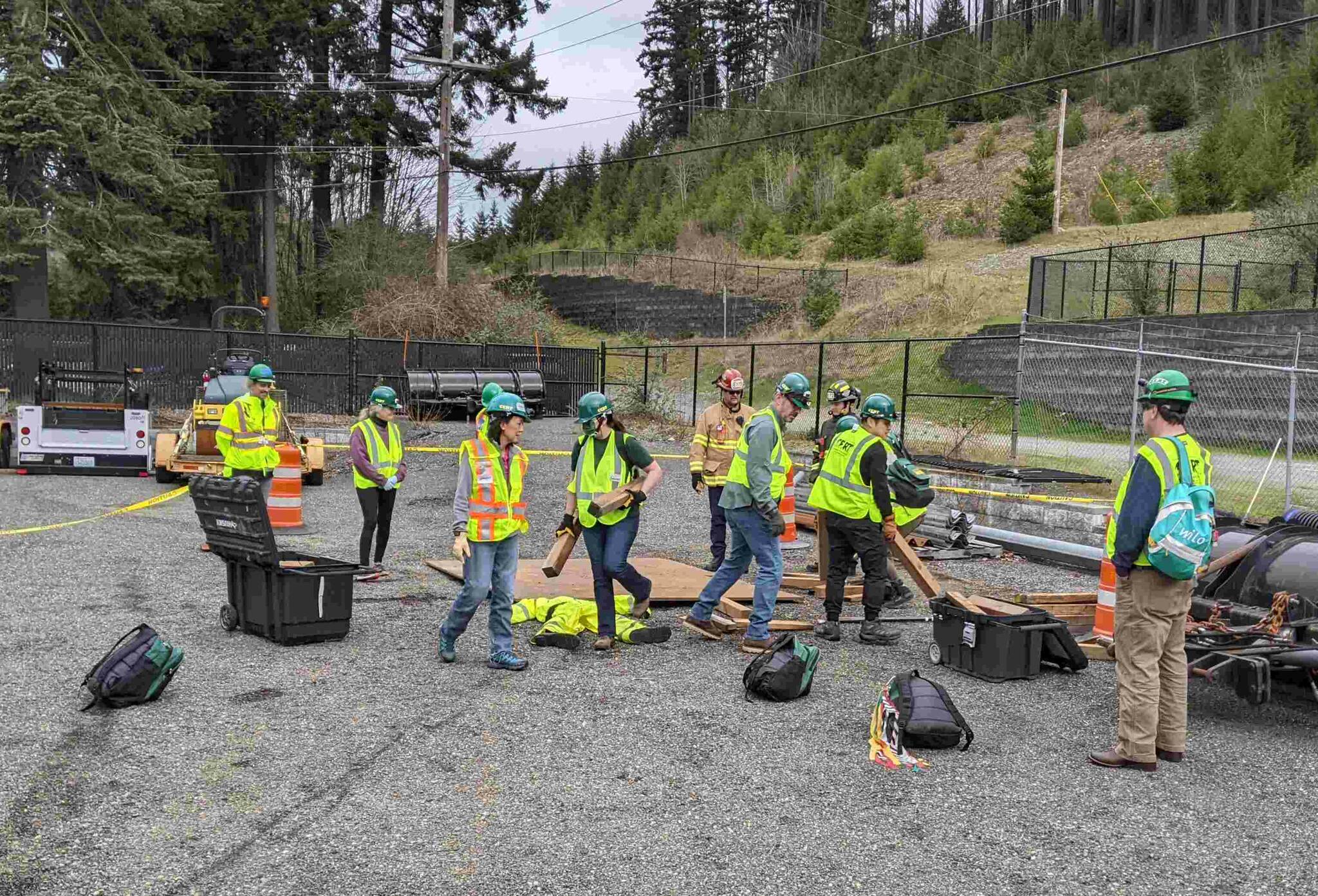Registration for the hands-on FEMA-certified Community Emergency Response Team (CERT) program at the Snoqualmie Fire Department is now open for Snoqualmie Valley residents over 18.
Based on curriculum provided by FEMA, the five-session course, taught primarily by volunteers, trains participants to help their families and neighbors during region-specific emergencies such as earthquakes and floods.
To be eligible for certification, participants must attend each Saturday course from 9 a.m. to 3:30 p.m. April 27 to June 1.
The CERT Eastside Coalition, comprised of several King County CERT program leaders, including those in Snoqualmie and Duvall, strives to share best practices and allocate resources across each individual program.
“CERT really starts with self-reliance and being able to operate safely without much outside assistance,” said Tom Walker, the CERT Coordinator and volunteer EMT with the fire department. “Then, you step up and ask yourself, ‘OK, how can I help my neighbors?’”
Each session at the fire department, 37600 SE Snoqualmie Parkway, tackles a different topic such as fire suppression, search and rescue operations, and navigating post-disaster emotions while remaining focused on events most likely to affect the Snoqualmie Valley.
Looking forward, Walker hopes to expand the course offerings to those younger than age 18 to increase emergency preparedness and awareness among all ages.
“Even in the United States, no community ever has enough rescuers to handle these big emergencies,” Walker said. “We will always be dependent on neighbors helping neighbors.”
After paying the $35 class fee, which is refundable upon class completion, participants will receive a student manual and a CERT kit, which includes a field operation guide, a hardhat, a safety vest, a backpack, goggles, gloves, a flashlight, a whistle, triage tape and hand sanitizing gel.
The last session involves a brief review of the information from all sessions and a practical drill in which participants exercise the skills they’ve learned.
“The drill is designed to transition them from guided instruction to actually making the decisions regarding implementation and organization of the skills we’ve taught them,” Walker said. “The team has to identify a leader, create a plan, and implement that plan. It helps put their skills into real-world practice.”
For a course schedule and registration form, visit www.snoqualmiewa.gov/179/CERT.


